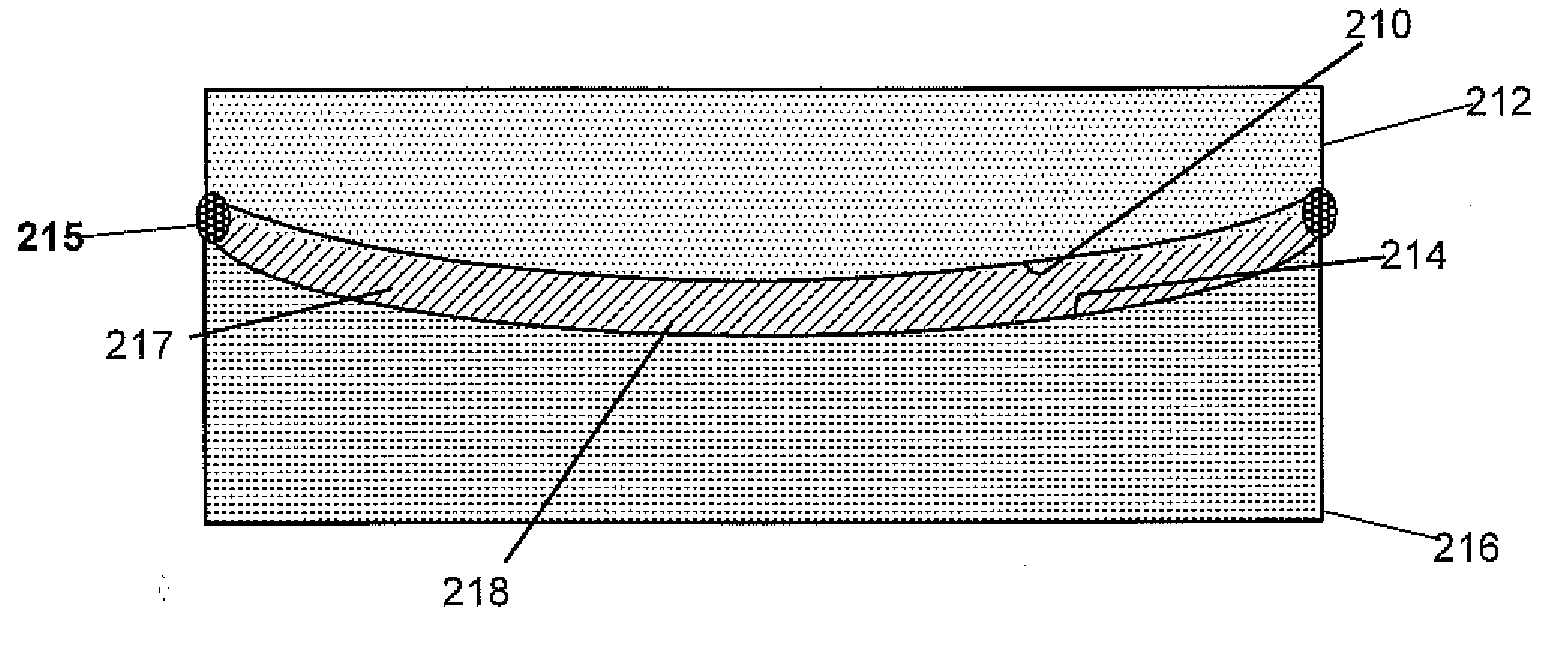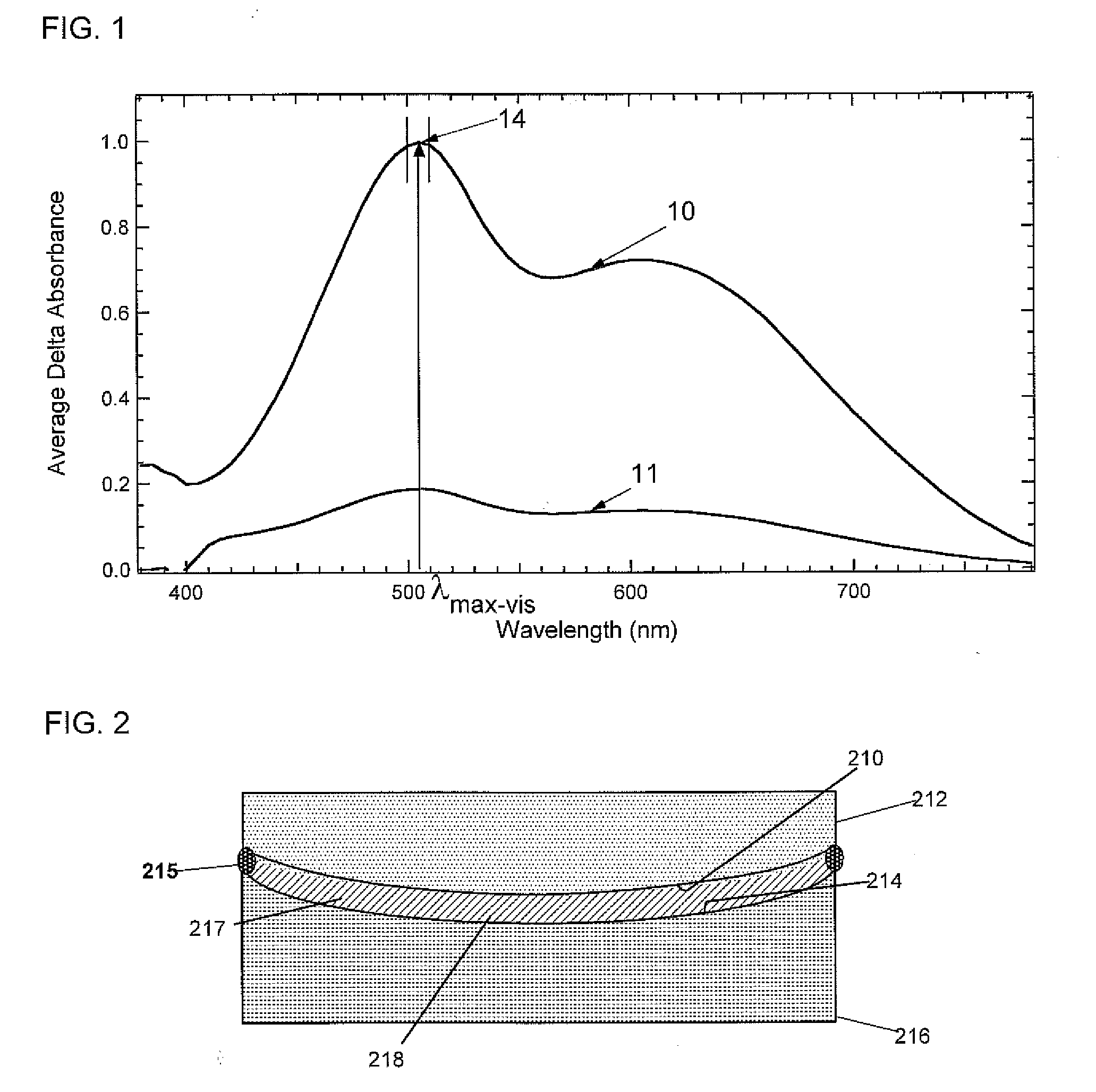Clear to circular polarizing photochromic devices and methods of making the same
- Summary
- Abstract
- Description
- Claims
- Application Information
AI Technical Summary
Problems solved by technology
Method used
Image
Examples
example 1
Step 1—Photochromic Dye Mixture
[0215]A mixture of the solid photochromic dyes (1.6 grams) listed below was prepared by adding the dyes to a glass bottle and mixing with a spatula.
Photochromic DyeWeight Percent of Total Dye MixturePhotochromic A (1)28.0Photochromic B (2)17.8Photochromic C (3)22.2Photochromic D (4)32.0(1) Photochromic A is an indenonaphthopyran reported to produce a light purple activated color.(2) Photochromic B is an indenonaphthopyran reported to produce a peach activated color.(3) Photochromic C is an indenonaphthopyran reported to produce a blue green activated color.(4) Photochromic D is an indenonaphthopyran reported to produce a green blue activated color.
Step 2—Resin Stabilizer Mixture
[0216]A mixture of the solid stabilizers was prepared to deliver the weight percent based on the weight of the total resin solids as listed in the Table below.
StabililzerWeight Percent of Resin SolidsTINUVIN ® 144 (5)0.5IRGAPHOS ® 12 (6)1.0IRGANOX ® 1010 (7)1.0(5) TINUVIN ® 144 ...
PUM
 Login to View More
Login to View More Abstract
Description
Claims
Application Information
 Login to View More
Login to View More - R&D
- Intellectual Property
- Life Sciences
- Materials
- Tech Scout
- Unparalleled Data Quality
- Higher Quality Content
- 60% Fewer Hallucinations
Browse by: Latest US Patents, China's latest patents, Technical Efficacy Thesaurus, Application Domain, Technology Topic, Popular Technical Reports.
© 2025 PatSnap. All rights reserved.Legal|Privacy policy|Modern Slavery Act Transparency Statement|Sitemap|About US| Contact US: help@patsnap.com


